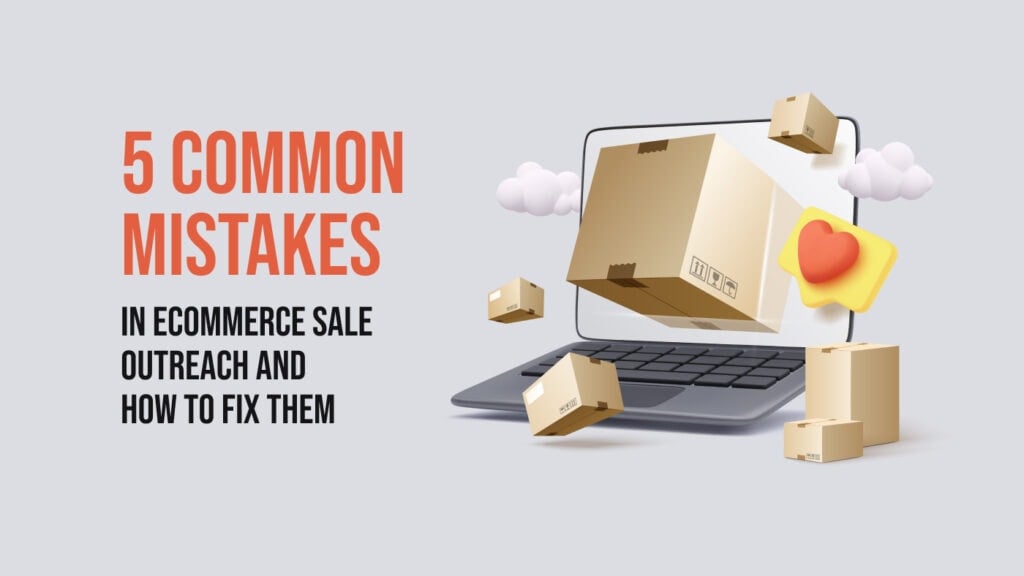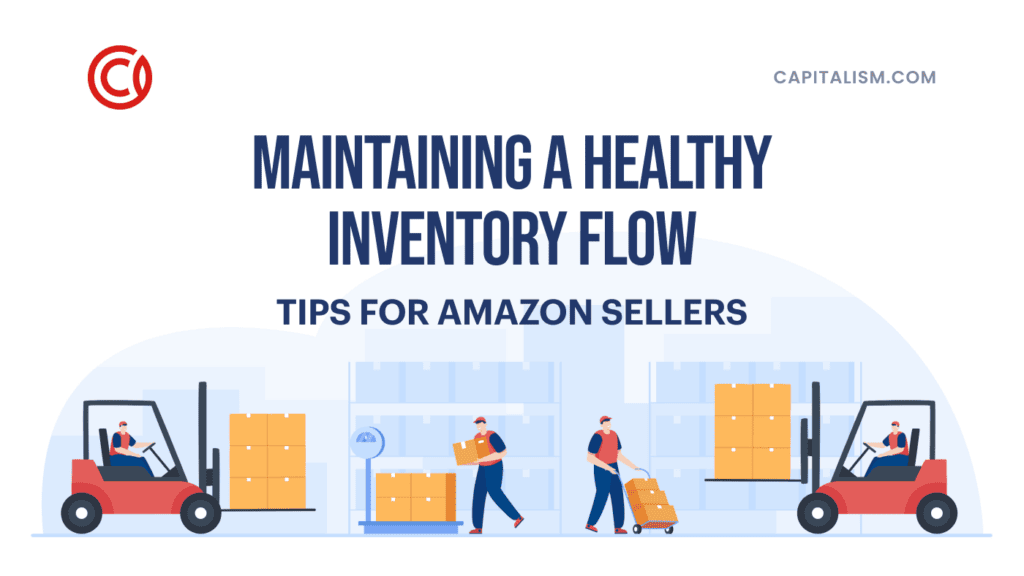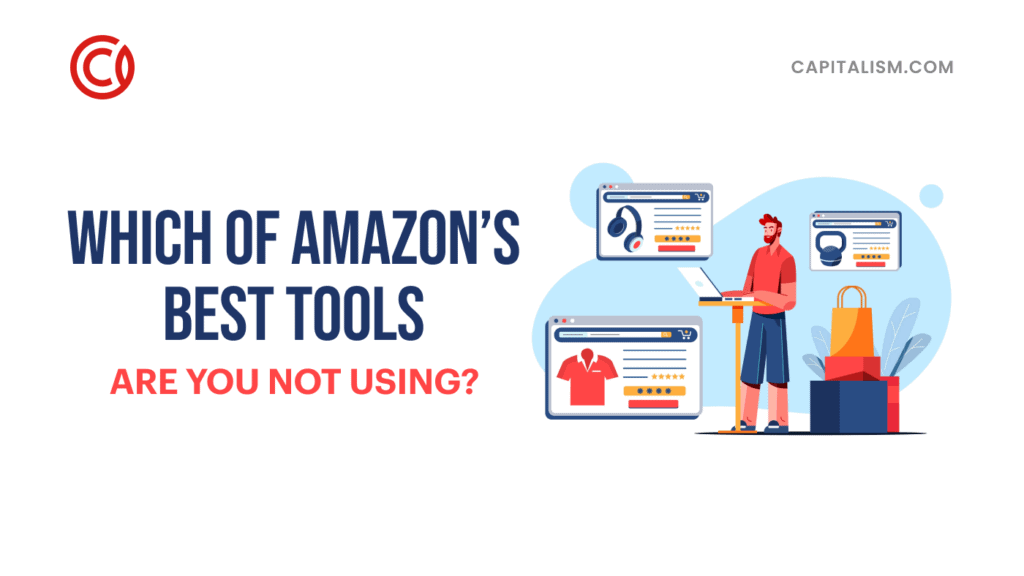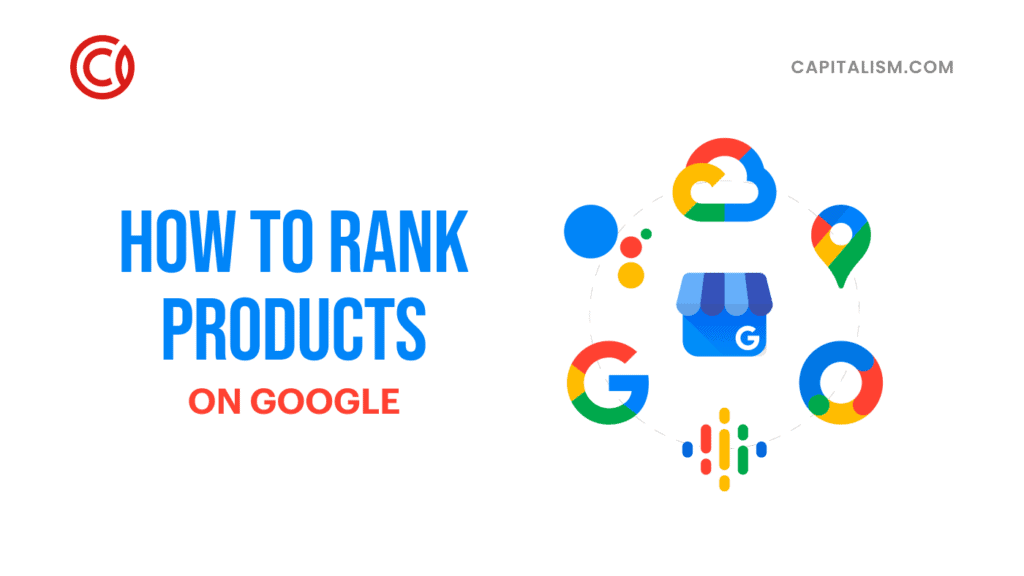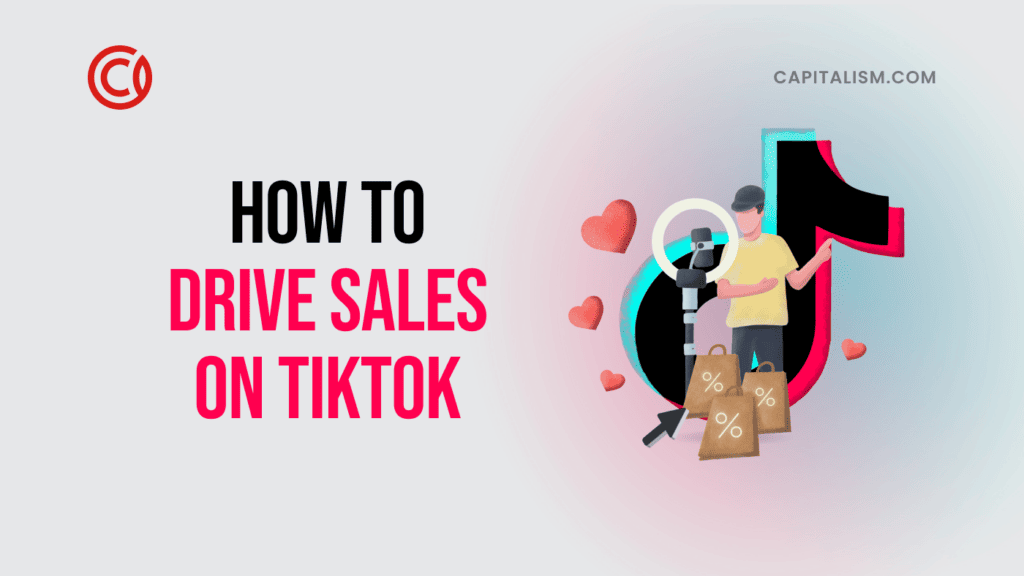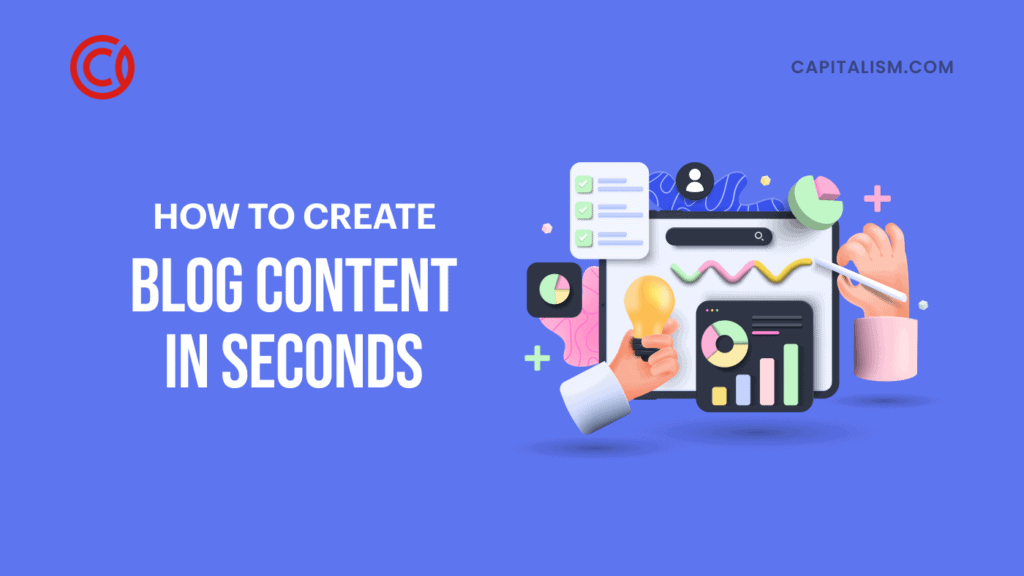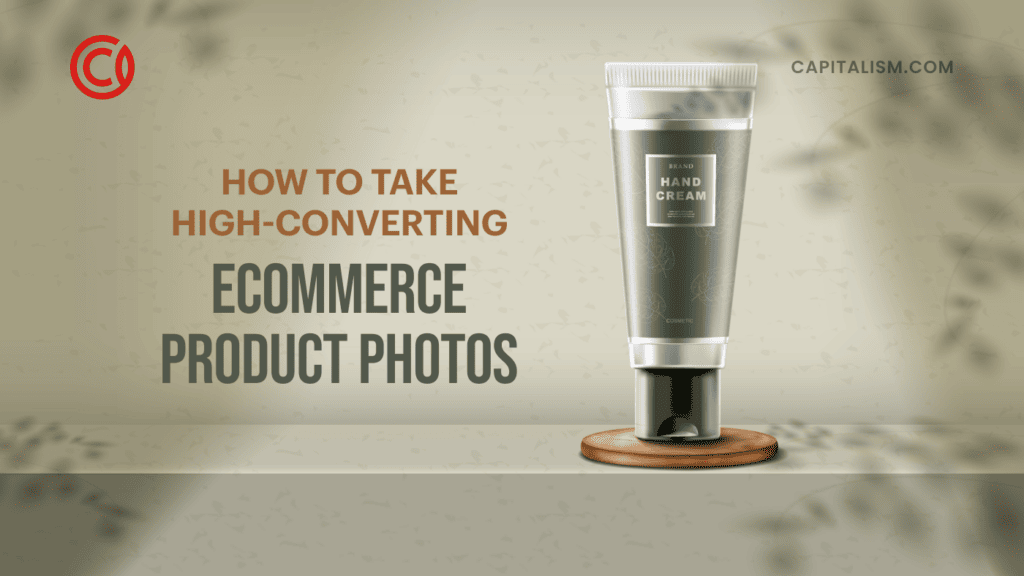Many e-commerce businesses make common mistakes when it comes to sales outreach, resulting in missed opportunities and frustrated customers.
These mistakes can leave customers feeling ignored and prevent your business from growing and reaching its full potential.
To ensure your business reaches its full potential, it’s important to identify and fix the five most common mistakes in e-commerce sales outreach.
In this blog post, we’ll explore 5 of those mistakes and provide tips on how to fix them so that you can improve your e-commerce sales strategy and increase your revenue. We'll cover everything from neglecting personalization's importance to overlooking social media's power.
So, if you’re an e-commerce business looking to boost your sales outreach efforts, keep reading!
Plus, find out how we can coach you to grow your net worth FREE.
Definition of e-commerce sales outreach
E-commerce sales outreach can be defined as reaching out to potential customers through various online channels to increase sales for an e-commerce business. It involves engaging customers and prospects through different marketing strategies to drive traffic to a website, converting leads into paying customers, and ultimately boosting revenue.
The most common method of e-commerce sales outreach is email marketing, which involves sending promotional offers, newsletters, and other types of content to a list of subscribers. However, cold email software has become increasingly popular in recent years as it offers more targeted and personalized outreach.
Cold email software allows businesses to send customized emails to potential customers who have not previously expressed interest in their products or services. This type of outreach can be highly effective when done correctly, as it enables businesses to target specific demographics and interests based on data analysis. In addition, cold email software can automate sending follow-up emails and tracking responses, making it easier for businesses to manage their outreach campaigns efficiently.
5 Common Mistakes in E-commerce Sales Outreach Process
Mistake #1: Not Sending Personalized Messages
One common mistake businesses make regarding sales outreach in e-commerce is not sending personalized messages. Customers receive countless generic messages that fail to capture their attention, let alone convince them to purchase.
Personalization is crucial for building trust and rapport with potential customers. Using their name, referencing recent purchases, or tailoring your message to their interests and needs can set you apart from the competition.
Non-personalized messages often fall flat, as customers receive countless generic emails daily. On the other hand, personalized messages can make customers feel seen, heard, and appreciated.
The key is to provide value to your customers and create a connection with them, which personalized messages can help achieve. Overall, e-commerce companies that employ personalized messaging can expect higher open rates, better ROI, and increased engagement.
Examples of non-personalized messages that can be a mistake in sales outreach.
- Sending generic messages: One of the most common mistakes sales reps make is sending generic messages without personalization. Generic messages sound robotic, and they don’t make a connection with the customer. This can lead to prospects ignoring the message or, worse, being turned off. Instead, craft personalized messages that are tailored to the customer.
- Not including a call to action: Another common mistake in sales outreach is not including a call to action. Without a call to action, the message is essentially useless. A call to action encourages the customer to take the next step, get in touch, or purchase the product or service.
- Not addressing the customer’s needs: Your message should focus on the customer’s needs, not your product or service. Messages that tout your product or service without addressing the customer’s needs are too salty and can turn the customer off. Instead, focus on how your product or service can solve their problem.
Strategies for personalizing your message
There are several strategies to implement to avoid the mistake of not sending personalized messages in e-commerce sales outreach.
First, research your target audience to understand their pain points, preferences, and interests. This will help you craft relevant messages that resonate with them.
Secondly, use their name in the email subject line and opening sentence, and avoid overly generic greetings like "Dear Sir/Madam".
Thirdly, reference their company or recent activity to demonstrate that you have done your homework.
Fourthly, offer a solution to a specific problem they may be facing and showcase how your product or service can help them address it.
Finally, end the email with a personalized call-to-action that aligns with their goals. By personalizing your message, you increase your chances of capturing the attention of potential customers and compelling them to take action.
Mistake #2: Not Following Up
In e-commerce sales outreach, following up is crucial to maximizing your conversion rates. Follow-up is staying in contact with potential customers after an initial interaction to continue the sales process. It's important because many potential customers may be interested in your product or service but may need more information or decisions before committing to a purchase.
Without follow-up, you risk losing out on potential business. Not following up includes:
- Failing to send a promised email.
- Neglecting to call back a customer who expressed interest.
- Forgetting to follow up with prospects who didn't purchase immediately.
By using personalized messaging, setting reminders, and utilizing automation tools, you can create an effective follow-up plan to increase your chances of success in e-commerce sales outreach.
An example of not following up can be a mistake in sales outreach.
One of the most common scenarios is when a sales rep takes too long to follow up with a potential customer after they’ve shown interest. If a sales rep waits too long to contact a potential customer, the customer could lose interest or even start looking elsewhere. This is especially true if the customer has been contacted by other sales reps and has heard from them more quickly.
Another scenario is when a sales rep doesn’t follow up enough. If a sales rep only contacts a potential customer once or twice, chances are that the customer won’t be ready to commit and could end up going with another company. To ensure that a customer feels valued, sales reps should follow up regularly and keep in touch with potential customers.
Finally, if a sales rep fails to follow up with a customer who has already made a purchase, they could miss out on a great opportunity to upsell or cross-sell. By staying in touch with customers who have already bought something, sales reps can increase their chances of buying more.
Strategies for following up on Ecommerce Sales Outreach
Set a timeline: Establish a timeline for when you should follow up with leads. This timeline should include initial contact as well as subsequent follow-ups. Depending on your industry, following up weekly, monthly, or even daily might be appropriate.
Stay organized: Create a system for tracking your leads and their responses. This will ensure you never forget to follow up and always have the latest information about each lead.
Personalize your message: When you follow up, make sure to personalize your message. Don’t just send generic messages; instead, make sure that you tailor your message to the individual lead.
Use multiple channels: Don’t rely on email for your follow-up efforts. Consider using other channels like phone calls, text messages, and social media. This will help you reach more leads and increase your chances of a successful follow-up.
Be persistent: Don’t give up after the first follow-up attempt. Many leads may need more than one follow-up before they’re ready to purchase.
Mistake #3: Not Offering Value
In e-commerce sales outreach, offering value to potential customers is crucial. Value can refer to anything helpful, informative, or entertaining to the customer. It can come in product recommendations, discounts, free resources, or educational content.
Failing to offer value can result in a lack of engagement from potential customers or, even worse, being marked as spam. To avoid this, e-commerce sales reps should focus on understanding their customers' needs and interests and tailor their outreach accordingly.
Firstly, overly aggressive or pushy sales tactics can quickly turn off potential customers. You risk coming across as desperate and insincere by bombarding them with offers and discounts right out of the gate. On the other hand, taking a more measured approach that focuses on establishing trust and understanding customer needs can help you build stronger relationships over time.
Another reason not offering immediate value in your e-commerce sales outreach can be beneficial is that it forces you to think more strategically about your overall business goals.
This could involve researching their target audience, segmenting their email lists, and creating personalized content that adds value to the customer's life. By offering value, sales reps can build trust with potential customers, increase engagement, and drive sales.
Examples of not offering value
- Not offering discounts or deals. If you’re not offering discounts or deals to your customers, they’re likely to take their business elsewhere. Offering discounts or deals is a great way to show that you value their business and are willing to go out of your way to make them happy.
- Making it too difficult to make a purchase. If your website or checkout process is too complicated, customers will likely give up and look for an easier alternative. Make sure your website is user-friendly and easy to use.
- Not providing enough information. If your e-commerce site doesn’t provide enough information about your products and services, customers may be suspicious or confused and take their business elsewhere. Include detailed product descriptions and other helpful information to ensure that customers are well-informed.
- Not responding to customer inquiries. If customers have questions or concerns, they’ll expect a prompt response. If you’re not responding to customer inquiries promptly, they’ll be more likely to take their business elsewhere.
- Not offering enough payment options. Customers want to be able to pay for their purchases in the most convenient way. Customers may become frustrated and take their business elsewhere if your e-commerce site doesn’t offer enough payment options.
Strategies for offering value in e-commerce sales outreach
Give Incentives: Offering incentives is one of the most effective ways to offer value in e-commerce sales outreach. This could include discounts, free shipping, or even offering a free product for certain purchases. Incentives are a great way to show prospects that you value their business and want to satisfy them.
Personalize Your Approach: Personalization is key in e-commerce sales. Try to get to know your prospects and understand their needs and interests. This way, you can tailor your outreach to make it more relevant to them, which helps create a connection.
Educate Your Prospects: One way to help your prospects make informed decisions is by providing them with education. For example, you could create blog posts and videos that answer common questions people have about your products or services. This helps give prospects an idea of what they’re buying and why it’s worth investing in.
Listen to Feedback: Feedback is essential in e-commerce sales outreach. Please pay attention to what your prospects are saying and consider their feedback. This will help you understand what matters to them and what you could do better.
Showcase Testimonials: Sharing customer testimonials is another great way to offer value in e-commerce sales outreach. Testimonials can help build trust and show prospects that other customers have been satisfied with your products or services.
Mistake #4: Not Optimizing the Process
Optimizing the e-commerce sales outreach process is crucial for businesses to succeed online. It involves analyzing and refining every step of the sales outreach process to improve efficiency and effectiveness. This ensures potential customers have a seamless and positive experience when interacting with the brand online. Businesses can identify and address potential issues hindering sales conversion rates by optimizing the process.
To optimize the e-commerce sales outreach process, businesses can implement strategies such as improving website speed, simplifying the checkout process, providing exceptional customer service, and making the website design more user-friendly. This will improve sales conversion rates and enhance the overall customer experience.
For example, suppose you're solely focused on sending automated emails and following up with leads via phone calls or chatbots. In that case, you could miss out on opportunities to connect with your audience. Personalization and human interaction are still crucial components of successful sales outreach. By over-optimizing the process, you risk losing those personal touches that can make all the difference in converting leads into customers.
Moreover, when you're constantly tweaking and refining the process, there's a danger of becoming complacent and failing to adapt to changing circumstances.
Examples of not optimizing in e-commerce sales outreach
- Not segmenting your audience: One of the most important things you can do to improve your e-commerce sales outreach is to segment your audience. Segmenting your audience means targeting different people with different messages based on age, gender, location, interests, and other factors. Failing to do this can lead to generic messages that don’t resonate with any particular group.
- Not Optimizing Your Website: Your website is the first thing customers see when they visit your online store. If it’s not optimized for sales, customers won’t have an easy time navigating your store and will likely leave without purchasing. Make sure you’re optimizing your website for sales. This includes making it easy to navigate, adding clear call-to-action buttons, and providing helpful information about your products.
- Not leveraging the right channels: By utilizing the optimal channels for your e-commerce sales outreach, you can effectively optimize success. Different media types are more effective for targeting particular demographics – social media is ideal for attracting younger audiences while email remains a more successful option concerning older groups. By judiciously employing these different platforms, any efforts toward reaching potential consumers should be fruitful!
- Not tracking results: Finally, tracking the results of your e-commerce sales outreach is important. By tracking metrics such as open rates, click-through rates, and conversion rates, you can see what’s working and what’s not. This information can then be used to fine-tune your outreach efforts and ensure they are as effective as possible.
Strategies for optimizing e-commerce sales outreach
Utilize Social Media: Social media is an invaluable tool for e-commerce businesses. Use it to engage with your customers, respond to their questions, and spread the word about your products and services. You can also use it to promote discounts, coupons, and other offers to encourage customers to purchase from your store.
Offer Loyalty Programs: Loyalty programs can be a great way to keep customers returning to your store. Offer rewards points, discounts, and other incentives to those who shop with you frequently. This will keep them engaged and encourage them to continue purchasing from you.
Invest in SEO: Search engine optimization (SEO) is one of the most important aspects of e-commerce sales outreach. Investing in SEO will help your store rank higher in search engine results pages, driving more traffic to your website and increasing sales.
Leverage Email Marketing: Email marketing is another effective tool for e-commerce sales outreach. Use it to send customers personalized newsletters, promotional offers, and other content to drive sales. Please make sure the emails are relevant to their interests and needs.
Analyze Performance: Finally, analyze the Performance of your e-commerce sales outreach campaigns. Monitor the results to see what’s working and what’s not. This will help you adjust your strategy and focus on the tactics driving the most sales.
Mistake #5: Not Taking Advantage of Automation
Automation is quickly becoming an essential part of successful e-commerce sales outreach. It can help you save time, increase efficiency and reduce manual effort. Automation can also make it easier to personalize your messages and target specific customer segments.
Unfortunately, many e-commerce business owners are not using automation tools. They may be skeptical about the effectiveness of automated solutions or not have the knowledge or resources to implement them.
To maximize your sales outreach efforts, you must take advantage of automation. Automation tools can help you to reach more customers, engage with them more effectively and build relationships more quickly.
Here are some of the key benefits of using automation in your e-commerce sales outreach:
- Automate customer segmentation: Automation tools can help you to segment your customer base more easily and accurately. This makes targeting customers with the right messages easier, increasing the likelihood of successful conversions.
- Automate customer engagement: Automation tools can help you to engage with customers more quickly and effectively. You can set up automated messages and campaigns to reach customers and nurture them through sales.
- Automate follow-ups: With automation, you can set up automated follow-ups to ensure no customer is left behind. These follow-ups can help increase customer retention and ensure that you reach out to the right customers at the right time.
- Automate data analysis: Automation tools can help you to analyze your data and identify trends and insights. This can help you to better understand your customer base and develop more targeted and effective sales strategies.
How to use automation in e-commerce sales outreach
By using automation in your e-commerce sales outreach, you can reduce your team's time and effort to reach out to potential customers. Automation can help you target the right customers, craft the right messages, and deliver those messages efficiently and effectively. With automation, you can maximize your sales outreach's impact without investing more time or money.
Cold email software is one of the most popular tools for automating e-commerce sales outreach. Cold email software is designed to help you automate reaching out to potential customers via email. It can generate personalized emails for each customer and track their responses. It can also help you segment your customers, create follow-up emails, and automate tasks like tracking leads or responding to inquiries.
By utilizing cold email software, e-commerce businesses can improve their sales outreach and target the right customers more efficiently. Cold email software makes it easier to keep up with potential customers and ensures that your messages are personalized and tailored for the specific customer.
Conclusion
In conclusion, e-commerce sales outreach is important to any successful e-commerce business. Ensuring that your outreach efforts are effective and avoiding the common mistakes discussed in this article is essential.
By keeping these mistakes in mind and taking the necessary steps to fix them, you can ensure that your outreach efforts are successful and help you reach more customers.
About the Author
Sarah Marksons is a Marketing consultant primarily in B2B lead generation. She’s best known for her insightful blogs on email marketing, B2B and SaaS companies, and business growth. Sarah also has a good network in the sales industry, especially in the digital sales community. Apart from her work, she contributes to the community as an animal rights advocate. She loves creative writing, aspiring to make the world safer for everyone through marketing, writing, and everything she does.
Psst...
Capitalism.com is a wealth education company. We teach people how to find their own freedom so they can be their best selves.
In fact, we’re on a mission to make one million new millionaires by 2028. We’d love YOU to be on that list.
That’s why we made this FREE course that will help you build a million dollar brand of your own in about a year. Let's do this!
